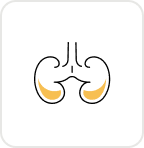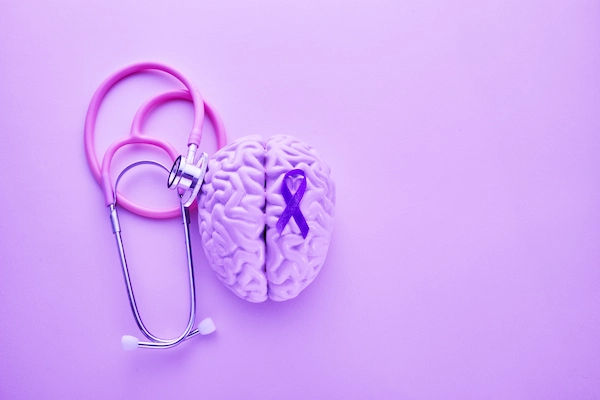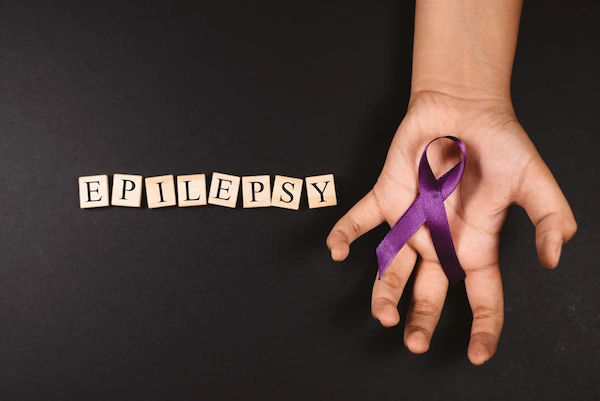Understanding Epilepsy: Symptoms, Causes, and Treatment
Learn about epilepsy in this comprehensive guide. Explore its symptoms, causes, treatment options, and effective ways to manage seizures for better quality of life.

Written by Dr. Siri Nallapu
Reviewed by Dr. Rohinipriyanka Pondugula MBBS
Last updated on 29th Sep, 2025

Introduction
Epilepsy is a chronic neurological disorder that affects millions of people worldwide, yet it remains widely misunderstood. Characterised by recurrent, unprovoked seizures, epilepsy is not a single condition but a spectrum of disorders with a wide range of seizure types and severity. If you or a loved one has been touched by this condition, you know that the journey involves more than just managing medical symptoms; it's about navigating daily life, societal perceptions, and emotional wellbeing. This guide aims to demystify epilepsy, providing a clear, compassionate, and comprehensive overview. We will explore what causes seizures, how epilepsy is diagnosed, the latest treatment options available, and practical advice for living well with the condition. Our goal is to empower you with knowledge, replacing fear with understanding and uncertainty with a clear path forward for effective management and care.
What is Epilepsy? Beyond the Seizures
Epilepsy is more than just recurring seizures; it’s a complex neurological condition that affects brain activity and daily living.
Defining the Neurological Disorder
At its core, epilepsy is a disorder of the brain. The brain consists of billions of neurons (nerve cells) that communicate through electrical signals. A seizure occurs when there is a sudden, uncontrolled burst of electrical activity in a group of neurons, causing a temporary disruption in the messaging systems between brain cells. Think of it as an "electrical storm" in the brain. This storm can cause a wide range of symptoms, from strange sensations and loss of awareness to convulsions. A diagnosis of epilepsy is typically made after a person has had two or more unprovoked seizures separated by at least 24 hours.
Epilepsy vs. a Single Seizure: Understanding the Difference
It's crucial to understand that not everyone who has a seizure has epilepsy. High fevers in children, severe head injuries, extremely low blood sugar, or withdrawal from alcohol can trigger a single, isolated seizure. These are called "provoked" or "acute symptomatic" seizures. Epilepsy, on the other hand, is defined by a tendency to have recurrent, unprovoked seizures. The underlying cause is often a persistent condition that affects the brain's electrical activity, making a person more susceptible to seizures over time.
Consult a Neurologist for the best advice
Recognising the Signs: Types of Epileptic Seizures
Seizures are categorised based on where in the brain the abnormal electrical activity starts and how much of the brain is affected. This classification helps guide treatment.
Focal Onset Seizures (Previously Partial Seizures)
These seizures begin in just one part of the brain. The symptoms of epilepsy in adults and children during a focal seizure depend entirely on the specific brain area involved.
Focal Aware Seizures (Simple Partial): The person remains fully conscious and aware. Symptoms can include:
- Sudden jerking of a limb.
- A feeling of déjà vu or jamais vu (a sense of unfamiliarity in a familiar place).
- Unusual tastes or smells.
- A rising sensation in the stomach.
Focal Impaired Awareness Seizures (Complex Partial): These affect consciousness. The person may appear confused, dazed, and unresponsive. They may perform repetitive, automatic movements like lip-smacking, fumbling, or walking in circles.
Generalised Onset Seizures
These involve both sides of the brain from the very beginning of the seizure.
- Tonic-Clonic Seizures (Grand Mal): These are the most recognised type. The person loses consciousness. The body first stiffens (tonic phase), followed by rhythmic jerking (clonic phase). Breathing may be affected, and the person may bite their tongue.
- Absence Seizures (Petit Mal): More common in children, these involve brief lapses in awareness. The person may stare blankly for a few seconds, sometimes with subtle eye blinking, and then resume activity as if nothing happened.
- Other Generalised Seizure Types: These include myoclonic seizures (brief, shock-like jerks), atonic seizures (sudden loss of muscle tone, causing a "drop attack"), and tonic seizures (stiffening of muscles).
What Causes Epilepsy? Unraveling the Triggers and Root Causes
In about half of all cases, the exact causes of epilepsy are unknown. This is called idiopathic epilepsy. For the other half, the cause can be traced to various factors.
Common Causes and Risk Factors
- Genetic Influence: Some types of epilepsy run in families, suggesting a hereditary component.
- Head Trauma: A severe head injury can lead to epilepsy, sometimes years later.
- Brain Conditions: This includes brain tumors, strokes, and infections like meningitis or encephalitis. Stroke is a leading cause of epilepsy in older adults.
- Developmental Disorders: Conditions like autism and neurofibromatosis can be associated with epilepsy.
- Prenatal Injury: Before birth, a baby's brain is vulnerable to infections, poor nutrition, or oxygen deficiencies.
The Role of Genetics in Epilepsy
While specific genes have been linked to certain rare forms of epilepsy, for most people, genetics is just one contributing factor. It's often a combination of genetic predisposition and environmental triggers that leads to the development of the disorder.
Getting a Diagnosis: The Path to Clarity
Timely and accurate diagnosis is the first step toward understanding epilepsy and finding the right treatment plan.
The Importance of a Detailed Medical History
The most critical tool for diagnosing epilepsy is a detailed description of the seizures. Since the person may be unaware during an episode, accounts from witnesses are invaluable. A neurologist will ask about what happened before, during, and after the event.
Diagnostic Tools: EEG, MRI, and Blood Tests
Electroencephalogram (EEG): This test records the brain's electrical activity through electrodes placed on the scalp. It can detect abnormal patterns that suggest a tendency for seizures.
Magnetic Resonance Imaging (MRI): An MRI scan provides detailed images of the brain to look for structural causes like tumors, scars, or malformations that could be causing seizures.
Blood Tests: These can help rule out other conditions that might mimic seizures, such as diabetes or electrolyte imbalances.
If your symptoms are complex or a diagnosis is unclear, consulting a neurologist online with Apollo24|7 can be a convenient first step to discuss your concerns and determine the necessary diagnostic path.
Get Your Health Assessed
Effective Treatment Strategies for Managing Epilepsy
With the right treatment strategies, many people with epilepsy can manage their symptoms and lead fulfilling lives.
Anti-Seizure Medications (ASMs): The First Line of Defense
For most people with epilepsy, anti-seizure medications (ASMs) can successfully control seizures. The goal is to find the right medication or combination of medications with the fewest side effects. It may take time to find the optimal dosage. Adherence to the prescribed regimen is crucial for effectiveness.
When Medications Aren't Enough: Surgical Options
If seizures are not controlled by medications (a condition known as drug-resistant epilepsy), surgery may be an option. This involves removing the specific area of the brain where the seizures originate, provided it is a small, well-defined region that can be safely removed without affecting critical functions.
Alternative Therapies: Ketogenic Diet and Vagus Nerve Stimulation
Ketogenic Diet: A high-fat, very low-carbohydrate diet that has proven highly effective, particularly for certain types of childhood epilepsy that don't respond to medication.
Vagus Nerve Stimulation (VNS): A device similar to a pacemaker is implanted in the chest. It sends mild electrical pulses to the brain via the vagus nerve in the neck, helping to prevent seizures.
First Aid for Seizures: What to Do and What to Avoid
Knowing what to do during a seizure is vital for everyone.
- DO: Stay calm. Gently guide the person to the floor and turn them onto their side. Clear the area of hard or sharp objects. Place something soft under their head. Time the seizure.
- DON'T: Do not restrain the person. Never put anything in their mouth; they cannot swallow their tongue. Do not offer food or water until they are fully alert.
- Call 108 if: The seizure lasts more than 5 minutes, the person has trouble breathing, they have another seizure immediately, they are injured, or it's their first known seizure.
Living a Full Life with Epilepsy: Management and Outlook
Epilepsy may bring challenges, but with proper care and support, individuals can still pursue their goals and live meaningful lives.
Safety Precautions and Lifestyle Adjustments
Simple adjustments can significantly improve safety. This includes showering instead of bathing, using a seizure-alert device if necessary, and being mindful of seizure triggers like lack of sleep, flashing lights (for some), stress, and alcohol.
Mental Health and Emotional Wellbeing
Living with a chronic condition can lead to anxiety and depression. Seeking support from therapists, counselors, or support groups is an essential part of comprehensive care. Managing stress through techniques like mindfulness and adequate sleep is also beneficial.
Debunking Common Myths About Epilepsy
Misconceptions about epilepsy often lead to stigma and fear; understanding the facts is key to breaking these myths.
- Myth: You should force something into the mouth of someone having a seizure to prevent them from swallowing their tongue.
- Fact: This is dangerous and can cause injury. The tongue cannot be swallowed.
- Myth: Epilepsy is a mental illness or a sign of intellectual disability.
- Fact: Epilepsy is a physical neurological condition. Most people with epilepsy have normal intelligence and lead full, productive lives.
- Myth: All people with epilepsy are sensitive to flashing lights.
- Fact: Only about 3% of people with epilepsy have photosensitive epilepsy, where flashing lights can trigger a seizure.
Conclusion
Understanding epilepsy is the first step toward effectively managing it and dismantling the stigma that too often surrounds it. This guide has walked you through the fundamentals from the electrical nature of seizures to the diverse and effective range of modern treatments. While the journey with epilepsy can present challenges, it's important to remember that it is a manageable condition. A correct diagnosis, a tailored treatment plan, a strong support system, and a proactive approach to lifestyle are the cornerstones of living well. If you suspect you or a loved one may be experiencing seizures, the most important action is to seek professional medical guidance. If you are experiencing symptoms that concern you, consulting a neurologist online with Apollo24|7 can provide a confidential and convenient starting point for evaluation. With continued research and growing awareness, the future for those living with epilepsy is brighter than ever, filled with the promise of greater control, understanding, and quality of life.
Consult a Neurologist for the best advice
Consult a Neurologist for the best advice

Dr. Aditendraditya Singh Bhati
Neurosurgeon
18 Years • MBBS(2004), DNB Neurosurgery(2014); MNAMS; Fellow Neuroendoscopy
Delhi
Apollo Hospitals Indraprastha, Delhi
(100+ Patients)

Dr. Ganeshgouda Majigoudra
Neurologist
10 Years • MBBS, MD ( GENERAL MEDICINE) DM (NEUROLOGY)
Bengaluru
Apollo Clinic, JP nagar, Bengaluru

Dr. E Prabhakar Sastry
General Physician/ Internal Medicine Specialist
40 Years • MD(Internal Medicine)
Manikonda Jagir
Apollo Clinic, Manikonda, Manikonda Jagir
(150+ Patients)

Dr Rajashekar Mummadi
Neurologist
3 Years • MBBS, DNB General Medicine, DRNB Neurology
Hyderabad
Dr Ram's Neuro Clinic, Hyderabad

Dr Debnath Dwaipayan
Neurosurgeon
9 Years • MBBS, MS(Gen. Surgery), DrNB (Neurosurgery)
Delhi
Apollo Hospitals Indraprastha, Delhi
Consult a Neurologist for the best advice

Dr. Aditendraditya Singh Bhati
Neurosurgeon
18 Years • MBBS(2004), DNB Neurosurgery(2014); MNAMS; Fellow Neuroendoscopy
Delhi
Apollo Hospitals Indraprastha, Delhi
(100+ Patients)

Dr. Ganeshgouda Majigoudra
Neurologist
10 Years • MBBS, MD ( GENERAL MEDICINE) DM (NEUROLOGY)
Bengaluru
Apollo Clinic, JP nagar, Bengaluru

Dr. E Prabhakar Sastry
General Physician/ Internal Medicine Specialist
40 Years • MD(Internal Medicine)
Manikonda Jagir
Apollo Clinic, Manikonda, Manikonda Jagir
(150+ Patients)

Dr Rajashekar Mummadi
Neurologist
3 Years • MBBS, DNB General Medicine, DRNB Neurology
Hyderabad
Dr Ram's Neuro Clinic, Hyderabad

Dr Debnath Dwaipayan
Neurosurgeon
9 Years • MBBS, MS(Gen. Surgery), DrNB (Neurosurgery)
Delhi
Apollo Hospitals Indraprastha, Delhi
More articles from Epilepsy
Frequently Asked Questions
Can epilepsy be cured?
While there is no universal 'cure' for epilepsy, it can often be completely controlled. Many children outgrow their epilepsy, and many adults become seizure-free with medication. For others, treatments can significantly reduce the frequency and severity of seizures.
What are common seizure triggers I should be aware of?
Common triggers include missing doses of medication, lack of sleep, high stress, flashing lights (for a small percentage), alcohol or drug use, and illness with fever. Keeping a seizure diary can help identify personal triggers.
Is the ketogenic diet for epilepsy safe for everyone?
The classic ketogenic diet is a strict medical therapy and should only be undertaken under the close supervision of a neurologist and a registered dietitian. It is not a DIY diet and is typically reserved for specific cases, especially children, where medications have not been effective.
Can you die from epilepsy?
While most seizures are not life-threatening, a condition called SUDEP (Sudden Unexpected Death in Epilepsy) is a rare risk. The best way to reduce the risk of SUDEP is to achieve the best possible seizure control through adherence to treatment.
How is epilepsy diagnosed in infants or non-verbal individuals?
Diagnosis relies more heavily on witness accounts and video recordings of events. Diagnostic tests like EEG and MRI remain crucial tools for identifying abnormal brain activity or structural issues.






